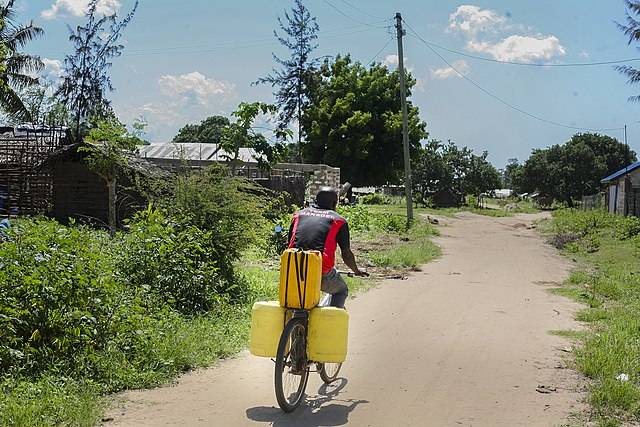Water supply and sanitation in Rwanda
Water supply and sanitation in Rwanda is characterized by a clear government policy and significant donor support. In response to poor sustainability of rural water systems and poor service quality, in 2002 local government in the Northern Byumba Province contracted out service provision to the local private sector in a form of public–private partnership. Support for public-private partnerships became a government policy in 2004 and locally initiated public-private partnerships spread rapidly, covering 25% of rural water systems as of 2007.
water tank transportation truck in Kigali
Water supply and sanitation in sub-Saharan Africa
Although access to water supply and sanitation in sub-Saharan Africa has been steadily improving over the last two decades, the region still lags behind all other developing regions. Access to improved water supply had increased from 49% in 1990 to 68% in 2015, while access to improved sanitation had only risen from 28% to 31% in that same period. Sub-Saharan Africa did not meet the Millennium Development Goals of halving the share of the population without access to safe drinking water and sanitation between 1990 and 2015. There still exists large disparities among sub-Saharan African countries, and between the urban and rural areas.
In many countries in Africa, jerry cans which are used to transport and store water are a good option for safe storage
Communal tap (standpost) for drinking water in Soweto, Johannesburg, South Africa. May 2005
Urban and rural piped water coverage in Africa and Asia in 2015: Access to piped water in rural areas of Africa is consistently lower than in urban areas of Africa.
Example for drinking water quality issues in Kenya and Ethiopia: Stacked bar chart of the number of publications reporting data for each water quality parameter, with publications grouped as reporting no water points exceeding guideline threshold or reporting at least one water point exceeding threshold. The chosen thresholds are from the country's standards or WHO health guideline or East Africa Standard (EAS) for natural potable water.





